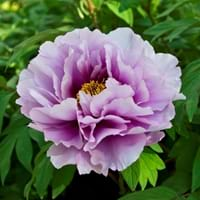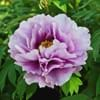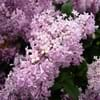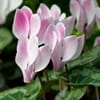Life Span
Perennial
Perennial
Type
Flowering Plants, Shrubs
Herbs, Shrub
Origin
Asia, North America, Southern Europe
Asia, China, Japan, South-Eastern Asia
Types
Aristocrat, Buckeye Belle, Henry Bockstoce , Abalone Pearl, Coral Supreme, Cytherea, Charlie's White
Not Available
Number of Varieties
Not Available
Habitat
Hillside, Woods
Semi desert, Shaded sites, Shady Edge
USDA Hardiness Zone
3-9
6-10
Sunset Zone
A3, 1a, 1b, 2a, 2b, 3a, 3b, 4, 5, 6, 7, 8, 9, 10, 11, 12, 13, 14, 15, 16, 17, 18, 19, 20, 22
1a, 1b, 2a, 2b, 3a, 3b, 4, 5, 6, 7, 8, 9, 10, 11, 14, 15, 16, 17, 18, 19, 20, 21, 22, 23, 24
Habit
Clump-Forming
Spreading
Flower Color
Pink, Red, White
Pale White
Flower Color Modifier
Not Available
Bicolor
Fruit Color
Not Available
Green, Light Green
Leaf Color in Spring
Dark Green
Green
Leaf Color in Summer
Dark Green, Green
Green
Leaf Color in Fall
Bronze, Dark Green, Green
Green
Leaf Color in Winter
Not Available
Green
Leaf Shape
Compound
Circular
Plant Season
Spring
Spring, Summer, Fall, Winter
Sunlight
Full Sun, Part sun
Partial Sun, Partial shade
Type of Soil
Loamy
Clay, Loam, Sand
The pH of Soil
Neutral
Acidic, Neutral
Soil Drainage
Well drained
Average
Bloom Time
Spring, Summer
Not Available
Tolerances
Not Available
Pollution, Soil Compaction
Where to Plant?
Ground, Pot
Container, Ground
How to Plant?
Grafting, Seedlings, Stem Planting, Transplanting
Cuttings, Stem Cutting, Vegetative Reproduction
Plant Maintenance
Medium
Low
Watering Requirements
Does not require lot of watering, It cannot sustain wet-feet, Keep the ground moist but not water-logged, Needs watering once a week, Prefer drip-irrigation instead of Over-head watering, Water occasionally
Needs Very high moisture, Never Over-water
In Summer
Lots of watering
Ample Water
In Spring
Moderate
Moderate
In Winter
Average Water
Average Water
Soil pH
Neutral
Acidic, Neutral
Soil Type
Loamy
Clay, Loam, Sand
Soil Drainage Capacity
Well drained
Average
Sun Exposure
Full Sun, Part sun
Partial Sun, Partial shade
Pruning
Do not prune during shooting season, Prune to control growth, Remove dead or diseased plant parts, Remove deadheads
Prune to stimulate growth, Remove damaged leaves, Remove dead branches, Remove dead leaves
Fertilizers
All-Purpose Liquid Fertilizer
All-Purpose Liquid Fertilizer, Compost
Pests and Diseases
Botrytis Blight, Leaf spot, Stem spot, Viruses
Red blotch
Plant Tolerance
Not Available
Shade areas, Shallow soil, Sun
Flower Petal Number
Semi-Double
Single
Foliage Texture
Coarse
Medium
Foliage Sheen
Glossy
Matte
Attracts
Ants
Aphids, Rabbits, Snails
Allergy
Not Available
Abdominal distension
Aesthetic Uses
Beautification, Bouquets, Showy Purposes, Used for decorating walls, fences, gates, hedges, etc.
Beautification, Showy Purposes, small hedge
Beauty Benefits
Not Available
Blood purifying, Making cosmetics, Remove blemishes
Environmental Uses
Air purification
Air purification
Medicinal Uses
Cough, Gout, Headache, Heartburn, Kidney problems, Upset stomach, Urinary tract problems
Appetizer, Cardiac, constipation, Digestion problems, Eliminate toxins, Liver problems
Part of Plant Used
Flowers, Root, Seeds
Leaf Stalks, Leaves, Seeds
Other Uses
Showy Purposes, Used as Ornamental plant, Used for fragrance
Oil is used for aromatherapy, Powdered and mixed with tea, Showy Purposes, Traditionally considered as lucky plant, Used as a laxative, Used as a thickener in soups
Used As Indoor Plant
No
Yes
Used As Outdoor Plant
Yes
Yes
Garden Design
Feature Plant, Foundation, Mixed Border
Groundcover
Botanical Name
Paeonia suffruticosa
PLEIOBLASTUS distichus
Common Name
Peony
Dwarf Bamboo
In German
Pfingstrose
Ajowan
In Spanish
Peonía
Trachyspermum ammi
In Greek
παιωνία
σπόρους καραμπίνα
In Portuguese
Peônia
aipo
In Latin
AGLAOPHOTIS
semina Carom
Phylum
Magnoliophyta
Magnoliophyta
Class
Magnoliopsida
Magnoliopsida
Order
Not Available
Apiales
Family
Paeoniaceae
Apiaceae
Genus
Paeonia
Trachyspermum
Clade
Angiosperms, Core eudicots, Eudicots
Angiosperms, Asterids, Eudicots
Tribe
Not Available
Apieae
Subfamily
Not Available
Apioideae
Number of Species
Not Available
Importance of Peony and Ajwain plant
Want to have the most appropriate plant for your garden? You might want to know the importance of Peony and Ajwain plant. Basically, these two plants vary in many aspects. Compare Peony and Ajwain plant as they differ in many characteristics such as their life, care, benefits, facts, etc. Every gardener must at least have the slightest clue about the plants he wants to plant in his garden. Compare their benefits, which differ in many ways like facts and uses. The medicinal use of Peony is Cough, Gout, Headache, Heartburn, Kidney problems, Upset stomach and Urinary tract problems whereas of Ajwain plant is Appetizer, Cardiac, constipation, Digestion problems, Eliminate toxins and Liver problems. Peony has beauty benefits as follows: Not Available while Ajwain plant has beauty benefits as follows: Not Available.
Compare Facts of Peony vs Ajwain plant
How to choose the best garden plant for your garden depending upon its facts? Here garden plant comparison will help you to solve this query. Compare the facts of Peony vs Ajwain plant and know which one to choose. As garden plants have benefits and other uses, allergy is also a major drawback of plants for some people. Allergic reactions of Peony are Not Available whereas of Ajwain plant have Abdominal distension respectively. Having a fruit bearing plant in your garden can be a plus point of your garden. Peony has no showy fruits and Ajwain plant has no showy fruits. Also Peony is flowering and Ajwain plant is not flowering . You can compare Peony and Ajwain plant facts and facts of other plants too.





